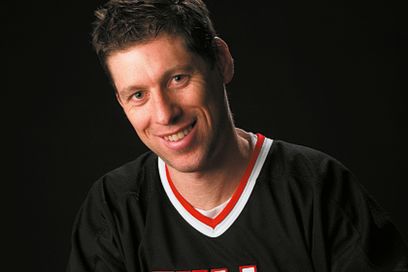By Andy Bloch
 I am asked many questions of strategy, whether beginners or advanced players. Some are easy, but require some mathematical skills. I can often solve these problems with a few mental calculations. I calculate the probability of winning the hand according to the sides of the pot.
I am asked many questions of strategy, whether beginners or advanced players. Some are easy, but require some mathematical skills. I can often solve these problems with a few mental calculations. I calculate the probability of winning the hand according to the sides of the pot.
Here is an example based on a question that was asked on a forum which I am concerned:
Our hero played to micro limits on a website of online poker with blinds at $. 25-$. 50. At the beginning of the hand, he had $ 44. He received Ad - Td and raise $2. Both blinds call. The flop falls Kd-Jd-2 c, giving our hero a royal flush draw. The big blind set $2, and our heroes raise to $2 more, the player next call and the big blind (richer than our hero) reraise all-in.
Our hero should caller with its $38 remaining? Assume that the last player to speak goes to bed. If our hero call and wins, it will be winner of $94. If he wins the hand four times out of 10, on average, it will take $37.60 after hand ($94 multiplied by four and divided by 10). Poker, it's the long term that matters, so it should only caller if his chances of winning are greater than 40%. Now, he must determine his chances of winning the hand.
The first step is to put his opponent on a range of possible hands. A few times, you can accurately determine that your opponent may have its models of updates. Most of the time, you have a little idea through your intuition. In this situation, the other players probably have a very strong hand, but there is also a chance that one of them bluff or at least semi-bluff.
The strongest hand that our hero could face is KKK. It would be 11 outs to win the pot all tiles except the 2d and three ladies. But even if our hero to complete his straight or his flush, his opponent can also win with a full or a square. I could calculate these probabilities, but I won't.
Instead, I rely on one of these many calculators on sides which can be found on the Internet as you can get on twodimes.net. The result tells us that Ad - Td will win 34 percent of the time less than the 40 + % which would result in the call profitable. If our hero know that his opponent has KKK, should lie. Probabilities for other trips remain the same.
But what if it is two pairs Kings and jacks? By using the odds calculator, his odds of winning the hand are 44%. Which is enough to make the call profitable. Our hero could also be against two other pairs or AK (46%). It might also be already in advance if it is against an aggressive opponent or an opponent who semi - blufferait something like Q - T (81%) or Qd - 9 d (82%).
Having done these calculations to win, our hero ends up so with the subjective decision about whether or not it should caller in assessing the probability that his opponent has a better hand than him. I assess that once on 2, the opponent will have 2 pairs or AK or even lower than a three of a kind hand. I guess that 5% or 10% of the time, his hand will be in advance. I would say to hero that, according to the figures, it should caller.
Our hero makes the call and the other player shows K - J, giving hero 44% chance of winning the hand. The turn brought a 2d, but the river gave a jack and our hero sees his flush defeated by a full house. The river is hard to swallow, but according to figures, heroes has done the good game in Cabrera.
It is useful to do some calculations, but it is also important to know how and when to use. And if you use the tools when your decision is uncertain, you will have a better grip on your game and you will master even better poker.
 I am asked many questions of strategy, whether beginners or advanced players. Some are easy, but require some mathematical skills. I can often solve these problems with a few mental calculations. I calculate the probability of winning the hand according to the sides of the pot.
I am asked many questions of strategy, whether beginners or advanced players. Some are easy, but require some mathematical skills. I can often solve these problems with a few mental calculations. I calculate the probability of winning the hand according to the sides of the pot.Here is an example based on a question that was asked on a forum which I am concerned:
Our hero played to micro limits on a website of online poker with blinds at $. 25-$. 50. At the beginning of the hand, he had $ 44. He received Ad - Td and raise $2. Both blinds call. The flop falls Kd-Jd-2 c, giving our hero a royal flush draw. The big blind set $2, and our heroes raise to $2 more, the player next call and the big blind (richer than our hero) reraise all-in.
Our hero should caller with its $38 remaining? Assume that the last player to speak goes to bed. If our hero call and wins, it will be winner of $94. If he wins the hand four times out of 10, on average, it will take $37.60 after hand ($94 multiplied by four and divided by 10). Poker, it's the long term that matters, so it should only caller if his chances of winning are greater than 40%. Now, he must determine his chances of winning the hand.
The first step is to put his opponent on a range of possible hands. A few times, you can accurately determine that your opponent may have its models of updates. Most of the time, you have a little idea through your intuition. In this situation, the other players probably have a very strong hand, but there is also a chance that one of them bluff or at least semi-bluff.
The strongest hand that our hero could face is KKK. It would be 11 outs to win the pot all tiles except the 2d and three ladies. But even if our hero to complete his straight or his flush, his opponent can also win with a full or a square. I could calculate these probabilities, but I won't.
Instead, I rely on one of these many calculators on sides which can be found on the Internet as you can get on twodimes.net. The result tells us that Ad - Td will win 34 percent of the time less than the 40 + % which would result in the call profitable. If our hero know that his opponent has KKK, should lie. Probabilities for other trips remain the same.
But what if it is two pairs Kings and jacks? By using the odds calculator, his odds of winning the hand are 44%. Which is enough to make the call profitable. Our hero could also be against two other pairs or AK (46%). It might also be already in advance if it is against an aggressive opponent or an opponent who semi - blufferait something like Q - T (81%) or Qd - 9 d (82%).
Having done these calculations to win, our hero ends up so with the subjective decision about whether or not it should caller in assessing the probability that his opponent has a better hand than him. I assess that once on 2, the opponent will have 2 pairs or AK or even lower than a three of a kind hand. I guess that 5% or 10% of the time, his hand will be in advance. I would say to hero that, according to the figures, it should caller.
Our hero makes the call and the other player shows K - J, giving hero 44% chance of winning the hand. The turn brought a 2d, but the river gave a jack and our hero sees his flush defeated by a full house. The river is hard to swallow, but according to figures, heroes has done the good game in Cabrera.
It is useful to do some calculations, but it is also important to know how and when to use. And if you use the tools when your decision is uncertain, you will have a better grip on your game and you will master even better poker.




